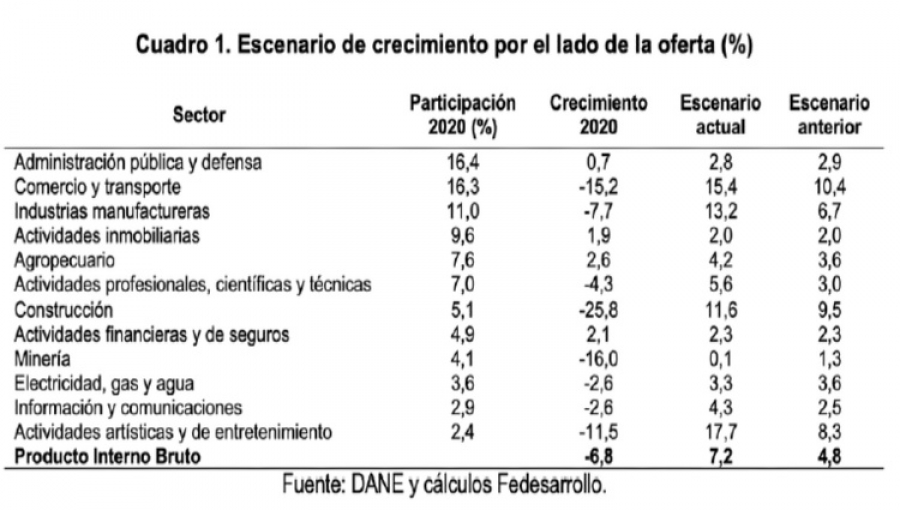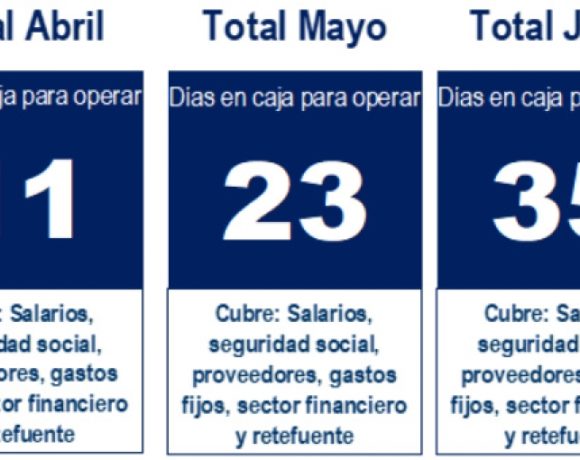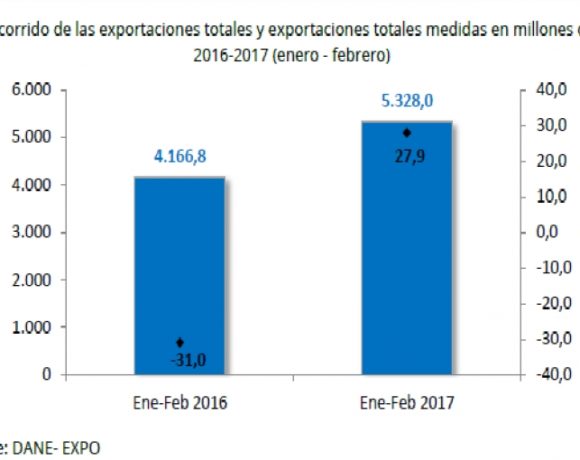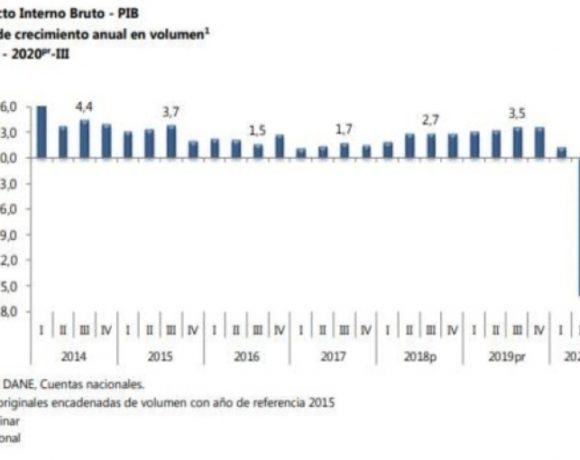Colombia’s Top Economic Think-Tank Sees 7% GDP Growth This Year

Fedesarrollo – Colombia’s leading economic think-tank – announced June 17 that it has revised upward its previous GDP (“PIB” in Spanish initials) growth forecast to 7.2% for full-year 2021, up from a prior estimate of 4.8% growth.
“The increase in the growth forecast is due to higher growth in the first quarter of this year compared to expectations — due to the low comparison base due to the economic contraction of 6.8 % the previous year — as well as the reopening of different sectors, the acceleration of the vaccination process and the greater prospects for global growth, which would positively impact internal and external demand,” explained Fedesarrollo director Luis Fernando Mejía.
An unexpectedly strong 1.1% GDP growth in first quarter (1Q) 2021 is now being followed by even stronger growth “in sectors such as construction (32%), entertainment activities and domestic services (23%), industry (22.5%) and trade (22.3%),” according to Colombia’s Economic Monitoring Indicator (ISE in Spanish initials).
“In the month of April [2021], the economy indicates an annual [year-on-year] growth of 25.8%, but with less dynamics compared to the production of March, as a result of the mobility restrictions in the framework of the third peak of Covid infections,” according to Fedesarrollo.
Meanwhile, the net effects of the violent national strikes and road blockades starting in late April “would be translated into a lower level of activity in May and, as of July, an increase in domestic demand would be observed as a result of the sectorial opening announced by the national government and local authorities,” according to Fedesarrollo.
“However, these very positive economic growth figures would not be immediately reflected in better labor market figures” — as unemployment is the main cause of rioting and strikes, since the Covid-19 crisis has caused massive job losses especially among younger workers.
“There is a significant risk related to the economy having a year of exceptional economic growth without a substantial reduction in the unemployment rate,” Mejía warned. “To avoid this risk, it is essential to execute a shock plan to generate employment during the second half of the year that allows unemployment rates to be below 12% at the end of the year.”
According to Fedesarrollo, Colombia’s strong growth forecast for full-year 2021 would be led by recoveries in commerce, transport and travel sectors, manufacturing industries and construction, which together would contribute 4.4 percentage points to the 7.2% GDP growth outlook.
On the other hand, “downward risks still persist, mainly due to an eventual return of protest demonstrations and roadblocks in the country, as well as eventual increases in the occupancy level of Intensive Care Units (ICU) that generate new restrictions on mobility and productive activity,” Fedesarrollo added.
















